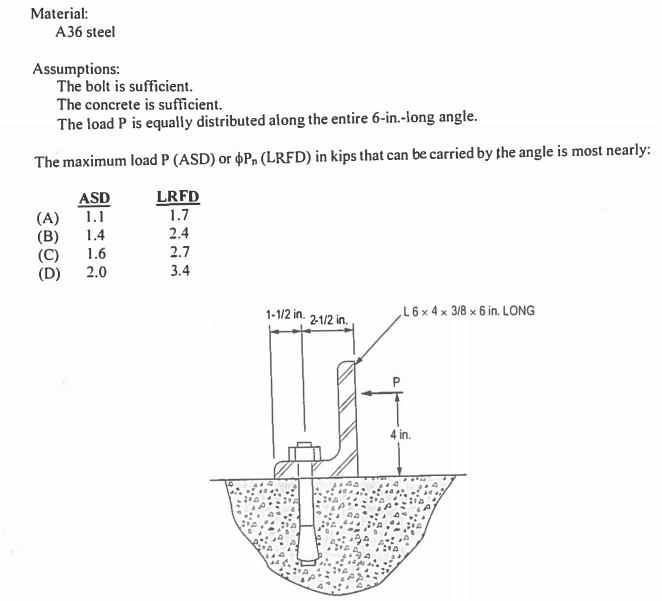Finite_element
Civil/Environmental
Designing an angle for a temporary bridge bearing keeper angle, in aashto LRFD. One leg is anchored into concrete, I need to size the thickness of angle for bending of the other leg.
Originally I designed it in ASD aashto standard spec, given horizontal load.
Yield stress fy = 50ksi
allowable = 27 ksi (AASHTO Std Spec Table 10.32.1A)
Leg = 4 in
Angle thickness = 0.625
Angle Length = 15 in
I can calculate the moment capacity of this section (=39.6 k-in)
design moment arm is 26.125 k-in calculated, so design checked out in standard spec.
I understand steel bending for aashto LRFD usually has a phi factor of 1.0, but how would I design this in LRFD, besides using factored loads? Is there any LRFD section I should be paying close attention to?
Thank you for any insight!!
Originally I designed it in ASD aashto standard spec, given horizontal load.
Yield stress fy = 50ksi
allowable = 27 ksi (AASHTO Std Spec Table 10.32.1A)
Leg = 4 in
Angle thickness = 0.625
Angle Length = 15 in
I can calculate the moment capacity of this section (=39.6 k-in)
design moment arm is 26.125 k-in calculated, so design checked out in standard spec.
I understand steel bending for aashto LRFD usually has a phi factor of 1.0, but how would I design this in LRFD, besides using factored loads? Is there any LRFD section I should be paying close attention to?
Thank you for any insight!!


